Category: Recommended Reading
Will generative AIs concentrate power like nuclear weapons?
Paul Scharre in Foreign Policy:
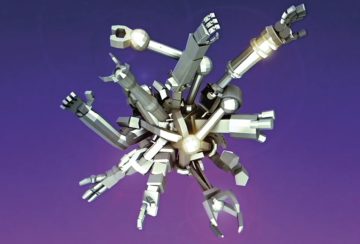 New technologies can change the global balance of power. Nuclear weapons divided the world into haves and have-nots. The Industrial Revolution allowed Europe to race ahead in economic and military power, spurring a wave of colonial expansion. A central question in the artificial intelligence revolution is who will benefit: Who will be able to access this powerful new technology, and who will be left behind?
New technologies can change the global balance of power. Nuclear weapons divided the world into haves and have-nots. The Industrial Revolution allowed Europe to race ahead in economic and military power, spurring a wave of colonial expansion. A central question in the artificial intelligence revolution is who will benefit: Who will be able to access this powerful new technology, and who will be left behind?
Until recently, AI has been a diffuse technology that rapidly proliferates. Open-source AI models are readily available online. The recent shift to large models, such as OpenAI’s ChatGPT, is concentrating power in the hands of large tech companies that can afford the computing hardware needed to train these systems. The balance of global AI power will hinge on whether AI concentrates power in the hands of a few actors, as nuclear weapons did, or proliferates widely, as smartphones have.
More here.
How Balzac’s Uncensored Novels Defined Post-Napoleonic Life
From Impressionism To Abstraction
Emily Watlington at Art in America:
 In “Monet/Mitchell: Painting the French Landscape,” on view at the St. Louis Art Museum through June 25, the enduring impact of Monet’s vision hits hard. I mean both his literal and artistic vision—these were inextricable for the plein air painter. The show highlights the rhymes between his work and that of the American Abstract Expressionist Joan Mitchell (1925–1992), focusing specifically on works both artists made in the gardens of Vétheuil, in northern France.
In “Monet/Mitchell: Painting the French Landscape,” on view at the St. Louis Art Museum through June 25, the enduring impact of Monet’s vision hits hard. I mean both his literal and artistic vision—these were inextricable for the plein air painter. The show highlights the rhymes between his work and that of the American Abstract Expressionist Joan Mitchell (1925–1992), focusing specifically on works both artists made in the gardens of Vétheuil, in northern France.
In the catalogue, curator Simon Kelly notes that Monet’s late work had a profound impact on Abstract Expressionism more broadly, prompting painter and critic Elaine de Kooning to coin the term “Abstract Impressionism.” The AbEx movement took off across the pond a couple decades after Monet’s death, and it’s clear that Monet charted some kind of path for the movement.
more here.
On Cormac McCarthy
Sophie Haigney and others at The Paris Review:
 Cormac McCarthy’s work means a lot to me, though when I try to explain exactly what, I find myself unusually stymied; my affinity for him doesn’t make all that much sense to me. What connection do I have with the landscapes he conjures? What knowledge do I have of the kind of violence that is the subject and the fabric of many of his books? What place do I find in a world that is, among other things, nearly entirely masculine, hostile, rife with true desperation? The answer is none—unlike with much of my reading, I do not seek a mirror in McCarthy’s worldview—and yet there is something in its aesthetic articulation that has always resonated with me. (I have a curious memory of reading The Road over my mom’s shoulder when I must have been about ten.) I have a passage from All The Pretty Horses saved on my desktop, which I have revisited often and send around now and again, and which I cannot quote in full here but which ends:
Cormac McCarthy’s work means a lot to me, though when I try to explain exactly what, I find myself unusually stymied; my affinity for him doesn’t make all that much sense to me. What connection do I have with the landscapes he conjures? What knowledge do I have of the kind of violence that is the subject and the fabric of many of his books? What place do I find in a world that is, among other things, nearly entirely masculine, hostile, rife with true desperation? The answer is none—unlike with much of my reading, I do not seek a mirror in McCarthy’s worldview—and yet there is something in its aesthetic articulation that has always resonated with me. (I have a curious memory of reading The Road over my mom’s shoulder when I must have been about ten.) I have a passage from All The Pretty Horses saved on my desktop, which I have revisited often and send around now and again, and which I cannot quote in full here but which ends:
The water was black and warm and he turned in the lake and spread his arms in the water and the water was so dark and so silky and he watched across the still black surface to where she stood on the shore with the horse and he watched where she stepped from her pooled clothing so pale, so pale, like a chrysalis emerging, and walked into the water.
more here.
Wednesday Poem
O, Western Democracy
I praise you,
who takes us to Gleneagles
in a warm coach,
so we can stage our protest
against the butcher of Ethiopia.
You drop us by an empty field
two miles from the hotel,
so even though the Butcher cannot hear,
we are free to hurl our slogans
into the wind:
“Political plurality!” we shout
“Human Rights!” we cry
The sun is low and it is rather cold.
Policemen stamp their boots.
Some crows hear what we say
and look surprised, they undertake
to carry messages into your conference
where every beak laps up
the sweetness of your words,
jabbing at your shortbread promises.
So in the dark I praise you,
for your glistening motorways
of free expression,
your empty fields and willing crows,
for the dry biscuits you feed to monsters.
by Alemu Tebeje
from Songs We Learn From Trees
© Translation: 2020, Chris Beckett and Alemu Tebeje
Publisher: Carcanet Classics, Manchester, 2020
Tuesday, June 20, 2023
From Rushdie with Love
Asad Raza in The Fence:
 You, a sensitive ingénue freshly arrived from the subcontinent, face the gleaming metropolis for the first time. Having hardened yourself to the feelings of your family, you have abandoned a prospective career as clerk in a lawyer’s office and a stable relationship with your third cousin, Padma, for a life of self-actualisation.
You, a sensitive ingénue freshly arrived from the subcontinent, face the gleaming metropolis for the first time. Having hardened yourself to the feelings of your family, you have abandoned a prospective career as clerk in a lawyer’s office and a stable relationship with your third cousin, Padma, for a life of self-actualisation.
A bookish sort of fellow, praised in your Commonwealth public school for your poise and intelligence, you dream of writing a novel. A proper one, full of lengthy digressions and state-of-the-nation screeds. You want to convey the psychic disruption and emotional tumult of the postcolonial condition. You suffer from double vision, blurred vision, seeing triple of everything, but one thing you do see clearly, though, is the glory. Your book will sweep the Booker, the Whitbread and any other prestigious bauble you could think of. You imagine the valley of tears from critics and fans alike, the letters of gratitude, the visiting professorships and the honorary doctorates. It’ll be the greatest novel ever written about the continent – if only you could just get past the first line.
You need a guide.
More here.
Tom Davidson On AI Takeoff Speeds
Scott Alexander at Astral Codex Ten:
 Last year I wrote about Open Philanthropy’s Biological Anchors, a math-heavy model of when AI might arrive. It calculated how fast the amount of compute available for AI training runs was increasing, how much compute a human-level AI might take, and estimated when we might get human level AI (originally ~2050; an update says ~2040).
Last year I wrote about Open Philanthropy’s Biological Anchors, a math-heavy model of when AI might arrive. It calculated how fast the amount of compute available for AI training runs was increasing, how much compute a human-level AI might take, and estimated when we might get human level AI (originally ~2050; an update says ~2040).
Compute-Centric Framework (from here on CCF) update Bio Anchors to include feedback loops: what happens when AIs start helping with AI research?
In some sense, AIs already help with this. Probably some people at OpenAI use Codex or other programmer-assisting-AIs to help write their software. That means they finish their software a little faster, which makes the OpenAI product cycle a little faster. Let’s say Codex “does 1% of the work” in creating a new AI.
Maybe some more advanced AI could do 2%, 5%, or 50%. And by definition, an AGI – one that can do anything humans do – could do 100%. AI works a lot faster than humans. And you can spin up millions of instances much cheaper than you can train millions of employees. What happens when this feedback loop starts kicking in?
More here.
Anna Ploszajski: How does materials science affect our lives?
Global Equality and Its Discontents
Branko Milanovic in Foreign Affairs:
 We live in an age of inequality—or so we’re frequently told. Across the globe, but especially in the wealthy economies of the West, the gap between the rich and the rest has widened year after year and become a chasm, spreading anxiety, stoking resentment, and roiling politics. It is to blame for everything from the rise of former U.S. President Donald Trump and the Brexit vote in the United Kingdom to the “yellow vest” movement in France and the recent protests of retirees in China, which has one of the world’s highest rates of income inequality. Globalization, the argument goes, may have enriched certain elites, but it hurt many other people, ravaging one-time industrial heartlands and making people susceptible to populist politics.
We live in an age of inequality—or so we’re frequently told. Across the globe, but especially in the wealthy economies of the West, the gap between the rich and the rest has widened year after year and become a chasm, spreading anxiety, stoking resentment, and roiling politics. It is to blame for everything from the rise of former U.S. President Donald Trump and the Brexit vote in the United Kingdom to the “yellow vest” movement in France and the recent protests of retirees in China, which has one of the world’s highest rates of income inequality. Globalization, the argument goes, may have enriched certain elites, but it hurt many other people, ravaging one-time industrial heartlands and making people susceptible to populist politics.
There is much that is true about such narratives—if you look only at each country on its own. Zoom out beyond the level of the nation-state to the entire globe, and the picture looks different.
More here.
Hannah Arendt on Thought & Moral Propositions
On Cormac McCarthy
Harold Bloom at Lit Hub:
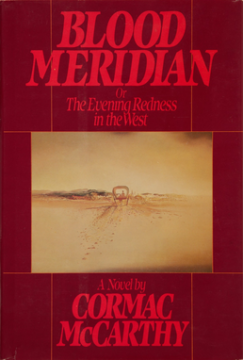 Cormac McCarthy’s Blood Meridian (1985) seems to me the authentic American apocalyptic novel, more relevant now than when it was written. The fulfilled renown of Moby-Dick and of As I Lay Dying is augmented by Blood Meridian, since Cormac McCarthy is the worthy disciple both of Melville and of Faulkner. I venture that no other living American novelist, not even Pynchon, has given us a book as strong and memorable as Blood Meridian, much as I appreciate his Crying of Lot 49, Gravity’s Rainbow, and Mason & Dixon. McCarthy himself has not matched Blood Meridian, but it is the ultimate Western, not to be surpassed.
Cormac McCarthy’s Blood Meridian (1985) seems to me the authentic American apocalyptic novel, more relevant now than when it was written. The fulfilled renown of Moby-Dick and of As I Lay Dying is augmented by Blood Meridian, since Cormac McCarthy is the worthy disciple both of Melville and of Faulkner. I venture that no other living American novelist, not even Pynchon, has given us a book as strong and memorable as Blood Meridian, much as I appreciate his Crying of Lot 49, Gravity’s Rainbow, and Mason & Dixon. McCarthy himself has not matched Blood Meridian, but it is the ultimate Western, not to be surpassed.
My concern being the reader, I will begin by confessing that my first two attempts to read through Blood Meridian failed, because I flinched from the overwhelming carnage that McCarthy portrays.
more here.
Rediscovering Helen Scott
Richard Brody at The New Yorker:
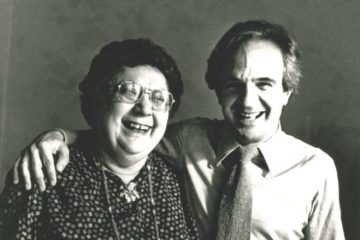 History is filled with secret heroes whose behind-the-scenes actions are essential to the exploits of public-facing heroes. Bringing these figures out of the shadows is a key role of historians. Helen Scott is one of those hidden heroines. Scott was the American film publicist, then translator, best known as François Truffaut’s collaborator on his book of interviews with Alfred Hitchcock. Her extraordinary, lifelong range of activities, in and out of movies, is matched by her literary depth of character. The writer who brought Scott’s life and work to light is one of Truffaut’s biographers, Serge Toubiana, who wrote a fascinating, fervently researched biography of Scott, titled “L’amie Américaine” (“The American Friend”), published in 2020. Toubiana also edited “Mon Petit Truffe, Ma Grande Scottie,” a collection of the correspondence between Scott and Truffaut, from 1960 to 1965, that came out in May.
History is filled with secret heroes whose behind-the-scenes actions are essential to the exploits of public-facing heroes. Bringing these figures out of the shadows is a key role of historians. Helen Scott is one of those hidden heroines. Scott was the American film publicist, then translator, best known as François Truffaut’s collaborator on his book of interviews with Alfred Hitchcock. Her extraordinary, lifelong range of activities, in and out of movies, is matched by her literary depth of character. The writer who brought Scott’s life and work to light is one of Truffaut’s biographers, Serge Toubiana, who wrote a fascinating, fervently researched biography of Scott, titled “L’amie Américaine” (“The American Friend”), published in 2020. Toubiana also edited “Mon Petit Truffe, Ma Grande Scottie,” a collection of the correspondence between Scott and Truffaut, from 1960 to 1965, that came out in May.
more here.
We are creeping towards soft immortality
Mandira Nayar interviews Siddhartha Mukherjee in The Week:
 Q\ You deal with a metaphysical question in the book, about new humans.
Q\ You deal with a metaphysical question in the book, about new humans.
A\ That is the provocative idea in this book. The new human is not going to be a kind of science fictional character. We are already making new humans. The first time someone transfused blood into another person, they imagined very believably that the person would be a different human being. The first time bone marrow transplants were done, there were real philosophical questions raised: are you the same person?
On a very fundamental level, we are dealing with these questions today as we move more and more into cell and gene therapies, where we are replacing cells, changing cells, and ultimately, trying to create a chimera of humans, other parts added to them, etc. I felt that the provocative question I would ask is, why aren’t these new humans? Everyone talks about new humans in a kind of sci-fi way, as if we were going to become robots. But the more likely course [is] to find ourselves rebuilt, or rebuilding ourselves by adding and subtracting cells, making cells different from ourselves through genetic therapies. These are humans that have been fundamentally changed. Whether you put a new kidney in me, whether you put a new layer of skin on me, whether you change my knees―some of these are cellular, some of these may not be cellular. But cellular therapy is creating a kind of a human being that we haven’t encountered before―often in which one human’s body fuses with another’s.
More here.
Brain-zapping technology helps smokers to quit
Simon Makin in Nature:
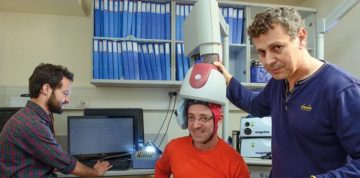 Galit Blecher never wanted to start smoking, but during her service in the Israeli military, she succumbed. “Everyone in Israel smoked in the army,” she says. Having held out for more than one year, an especially tedious posting broke her resolve. “I was driving three hours through the desert, several times a week,” she says. “I was falling asleep.”
Galit Blecher never wanted to start smoking, but during her service in the Israeli military, she succumbed. “Everyone in Israel smoked in the army,” she says. Having held out for more than one year, an especially tedious posting broke her resolve. “I was driving three hours through the desert, several times a week,” she says. “I was falling asleep.”
After returning to civilian life, she gave up smoking twice with the help of an antidepressant drug called bupropion (also known as Zyban), which reduces cravings and withdrawal, but she started smoking again each time. Then, six years ago, she joined a clinical trial of a new treatment targeted at people who had tried and failed to quit smoking. She hasn’t smoked since. “After Zyban, there was always a craving when I saw other smokers,” Blecher says. “This time it’s a real aversion; I can’t stand smelling cigarettes.”
The treatment that helped Blecher is called repetitive transcranial magnetic stimulation (TMS), and uses magnetic fields to stimulate regions of the brain involved in addiction. The effect on quit rates in the trial was modest, but comparable to bupropion, which blocks nicotine receptors in the brain. It was enough to convince the US Food and Drug Administration (FDA) to approve, in August 2020, the use of repetitive TMS to help people quit smoking.
More here.
Tuesday Poem
A Confession
My Lord, I loved strawberry jam
And the dark sweetness of a woman’s body.
Also well-chilled vodka, herring in olive oil,
Scents, of cinnamon, of cloves.
So what kind of prophet am I? Why should the spirit
Have visited such a man? Many others
Were justly called, and trustworthy.
Who would have trusted me? For they saw
How I empty glasses, throw myself on food,
And glance greedily at the waitress’s neck.
Flawed and aware of it. Desiring greatness,
Able to recognize greatness wherever it is,
And yet not quite, only in part, clairvoyant,
I knew what was left for smaller men like me:
A feast of brief hopes, a rally of the proud,
A tournament of hunchbacks, literature.
by: Czeslaw Milosz
from Poetic Outlaws
Monday, June 19, 2023
3 Quarks Daily Welcomes Our New Monday Columnists
Hello Readers and Writers,
We received a large number of submissions of sample essays in our search for new columnists. Most of them were excellent and it was very hard deciding whom to accept and whom not to. If you did not get selected, it does not at all mean that we didn’t like what you sent; we just have a limited number of slots and also sometimes we have too many people who want to write about the same subject. Today we welcome to 3QD the following persons, in alphabetical order by last name:
- Jerry Cayford
- Richard Farr
- Barbara Fischkin
- Barry Goldman
- Joseph Milholland
- Gus Mitchell
- Muna Nassir
- Nils Peterson
- Nate Sheff
- Oliver Waters
I will be in touch with all of you in the next days to schedule a start date. The “Monday Magazine” page will be updated with short bios and photographs of the new writers on the day they start.
Thanks to all of the people who sent samples of writing to us. It was a pleasure to read them all. Congratulations to the new writers!
Best wishes,
Abbas
Sunday, June 18, 2023
Ngũgĩ wa Thiong’o: three days with a giant of African literature
Carey Baraka in The Guardian:
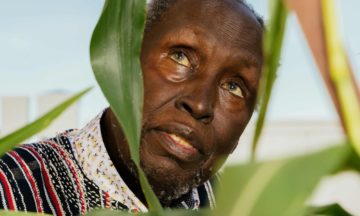 Ngũgĩ is a giant of African writing, and to a Kenyan writer like me he looms especially large. Alongside writers such as Chinua Achebe and Wole Soyinka, he was part of a literary scene that flourished in the 1950s and 60s, during the last years of colonialism on the continent. If Achebe was the prime mover who captured the deep feeling of displacement that colonisation had wreaked, and Soyinka the witty, guileful intellectual who tried to make sense of the collision between African tradition and western ideas of freedom, then Ngũgĩ was the unabashed militant. His writing was direct and cutting, his books a weapon – first against the colonial state, and later against the failures and corruption of Kenya’s post-independence ruling elite.
Ngũgĩ is a giant of African writing, and to a Kenyan writer like me he looms especially large. Alongside writers such as Chinua Achebe and Wole Soyinka, he was part of a literary scene that flourished in the 1950s and 60s, during the last years of colonialism on the continent. If Achebe was the prime mover who captured the deep feeling of displacement that colonisation had wreaked, and Soyinka the witty, guileful intellectual who tried to make sense of the collision between African tradition and western ideas of freedom, then Ngũgĩ was the unabashed militant. His writing was direct and cutting, his books a weapon – first against the colonial state, and later against the failures and corruption of Kenya’s post-independence ruling elite.
More here.
Contra Marc Andreessen on AI
Dwarkesh Patel at The Lunar Society:
Marc Andreessen published a new essay about why AI will save the world. I had Marc on my podcast a few months ago (YouTube, Audio), and he was, as he is usually, very thoughtful and interesting. But in the case of AI, he fails to engage with the worries about AI misalignment. Instead, he substitutes aphorisms for arguments. He calls safety worriers cultists, questions their motives, and conflates their concerns with those of the woke “trust and safety” people.
I agree with his essay on a lot:
- People grossly overstate the risks AI poses via misinformation and inequality.
- Regulation is often counterproductive, and naively “regulating AI” is more likely to cause harm than good.
- It would be really bad if China outpaces America in AI.
- Technological progress throughout history has dramatically improved our quality of life. If we solve alignment, we can look forward to material and cultural abundance.
But Marc dismisses the concern that we may fail to control models, especially as they reach human level and beyond. And that’s where I disagree.
More here.
The Art of Prediction and the Arc of the Moral Universe
Eric B. Schnurer in The Hedgehog Review:
 Starting during Barack Obama’s first run for president, I began making a number of predictions that struck most people as outlandish at the time. First was the prediction, based in part on Obama’s rise, that politics would realign around a socially liberal economic elite and socially conservative working class, with political parties in the United States switching places as the perceived voice of the elite and working class, respectively. As Obama’s hope-filled tenure drew to a close, I grew concerned that an unprincipled, narcissistic, and buffoonish character such as Donald Trump could channel the hopes and anxieties of tens of millions of Americans into a successful White House run. And as that unfolded, I became convinced that when or if Trump eventually lost power, tens of thousands of armed Americans would rally in an attempt to keep him there. Despite the fact that all this has happened, many, if not most, Americans cling to the belief that this turbulent interval in US history was an aberration that has passed and that all of what I just described is behind us.
Starting during Barack Obama’s first run for president, I began making a number of predictions that struck most people as outlandish at the time. First was the prediction, based in part on Obama’s rise, that politics would realign around a socially liberal economic elite and socially conservative working class, with political parties in the United States switching places as the perceived voice of the elite and working class, respectively. As Obama’s hope-filled tenure drew to a close, I grew concerned that an unprincipled, narcissistic, and buffoonish character such as Donald Trump could channel the hopes and anxieties of tens of millions of Americans into a successful White House run. And as that unfolded, I became convinced that when or if Trump eventually lost power, tens of thousands of armed Americans would rally in an attempt to keep him there. Despite the fact that all this has happened, many, if not most, Americans cling to the belief that this turbulent interval in US history was an aberration that has passed and that all of what I just described is behind us.
I beg to differ.
More here.
